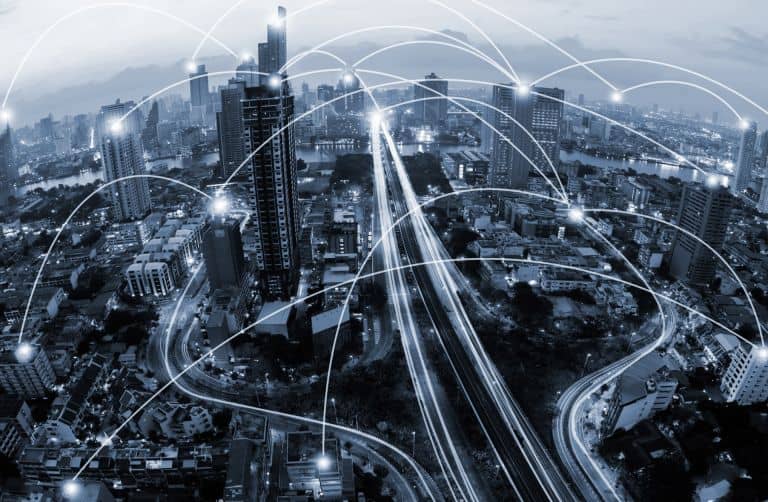Last year, the Office of Management and Budget (OMB) backed up its 2015 government eInvoicing mandate with a memo instructing all agencies to use eInvoicing to pay contractors by the end of fiscal year 2018. That deadline is rapidly approaching. If you supply the US federal government and want to continue to do so, you need to issue invoices electronically. This blog looks at what this means for your business and how you can benefit from eInvoicing.
The US government is the largest purchaser of goods and services in the US. In 2016, for instance, this added up to $461 billion in federal government procurement contracts. The much-quoted figure is that the US government handles 19 million invoices each year, of which only 40% are electronic. The OMB estimates that moving to eInvoicing will save the government as much as $260 million each year.
On issuing the memo, Dave Mader, Acting Deputy Director for Management at the OMB said that non-electronic invoice processes “provide little visibility to businesses and can result in tax dollars being used for late payment fees rather than to support critical agency missions”.
It’s clear that, although implementation timelines may slip, the US government is committed to making eInvoicing compulsory for Business-to-Government (B2G) invoicing. It also sees this as a springboard to encourage the adoption of Business-to-Business (B2B) eInvoicing – with a view, you must expect, to mandating its use in the future.
The benefits of eInvoicing
While steady, the adoption of eInvoicing in the US has been slow – especially compared with other areas of the world. This is slightly surprising given that the benefits are clear and understood. Compared with paper-based payment processes, eInvoicing is faster, more accurate and far more cost effective. In fact, Billentis, the specialist eInvoicing consultancy, found that electronic invoice processes can result in savings of 60 to 80% compared to traditional paper-based processing. The firm noted that: “Thanks to electronic and automated invoice processing, savings between 1 and 2% of turnover are realistic objectives”.
In addition, eInvoicing allows for end-to-end processing of invoices between the supplier’s ERP or enterprise application in the accounts payables and automatically flow in to the ERP or business software of the buyer’s accounts receivables. This is a point emphasized by the Federal Reserve Bank of Minneapolis that stated: “E-Invoicing is an important part of an efficient financial supply chain, optimizing the end-to-end process of B2B transactions, as it links the internal processes of enterprises to payment systems. As a result, eInvoicing is a vital component of the overall goal of making the end-to-end process (procure-to-pay and order-to-cash) more efficient”.
So, while meeting the government mandate may initially seem a hassle, it undoubtedly opens up a huge range of benefits to organizations to fully adopt the technology.
As the US is slightly behind the curve on eInvoicing, it is worth very briefly looking at how it’s working in other regions.
Lessons from the EU
The European Union (EU) has always been seen as a leader in eInvoicing with 30 countries across Europe already using some form of electronic invoicing. Indeed, the EU government eInvoicing mandate requires that member countries define rules for electronic invoices in public procurement processes by November 2018.
From an US perspective, another date in the EU’s adoption of eInvoicing may be more significant – 18 April 2019. That’s the date set for the EU to introduce an interoperable, common standard for all B2G trade in Europe. This eInvoicing standard has been designed to counteract the complexity of the wide variety of eInvoicing formats throughout Europe and facilitate cross-border trade in the EU.
The US faces a very similar eInvoicing landscape where every agency could institute it’s own eInvoicing approach and this would be further complicated as state and local governments make the transition. The initial eInvoicing mandate certainly gave scope for this to happen. However, the OMB is following the EU in attempting to deliver a simplified, interoperable model. It is introducing a model where companies work through a Federal Shared Service Provider (FSSP) or an OMB-approved eInvoicing solution – both have to deliver seamless integration into the federal government’s Integrated Award Environment (IAE) system.
While this is a positive step, a quick look at another region in the vanguard of eInvoicing introduces a note of caution.
Lessons from Latin America
Most Latin American government eInvoicing mandates are a means to tackle tax fraud. The results have been very impressive. The UN estimated in 2015 that VAT evasion alone costs Latin American governments as much as 37% of their total VAT take each year. With eInvoicing, Brazil collected $58 billion in additional tax revenue in a single year, and Mexico saw a 34% VAT collection increase in a single quarter. It’s little surprise that eInvoicing has been so enthusiastically adopted in the region. However, although the eInvoicing systems are similar, there are significant differences between countries that mean, for organizations trading across Latin America, complying with a wide range of eInvoicing formats and requirements.
More importantly, it’s instructive to see how eInvoicing has developed across Latin America. After the initial success with VAT fraud, countries in the region have moved quickly to extend the use of electronic document transfer into other business areas. Brazil, for example, has expanded it’s B2G mandates into accounting, inventory management and human resources. In addition countries including Mexico, Peru, Chile and Uruguay have extended their VAT and tax legislation.
However, it is government eInvoicing mandates for B2B transactions that have made Latin American the world leader in the adoption in the technology. It is no wild extension of logic to say that the speedy transition from B2G to B2B transactions that has happened in Latin America will occur in the US – it’s already started in the EU with countries such as Italy mandating eInvoicing for B2B transactions.
From B2G to B2B
We know it’s no wild extension because the US government explicitly states that this is what they want to happen. The Federal Reserve says: “The argument is, if a private business supplier implements eInvoicing to address government requirements, they may well extend this implementation to other businesses they supply”.
It is becoming more and more evident that governments want to see private business adopt eInvoicing with their business partners. And, they’d like for this to extend from invoicing into other areas of your business. We’re currently seeing the carrot – hey, you’re already using electronic invoicing for B2G, so why not B2B? – but, if the development of B2G is repeated, you can be quite sure that the stick – full mandate – won’t be too far behind.
The eInvoicing challenge for global enterprises
The eInvoicing challenge for global enterprises can be summed up by the extremely wide variety of eInvoicing formats and standards at play throughout the world. Even where real steps are being made to simplify and standardize – like the EU – history teaches that the eventual standard will be applied differently within different countries.
This environment means that every global organization will need to be able to support a multi-format, multi-channel environment to practice effective eInvoicing. Add to this that eInvoicing standards are constantly changing and evolving, and you’re faced with a complexity that almost no company will be able to manage by itself. Working with a global eInvoicing service provider – such as OpenText™ – is likely to be far more attractive to ensure compliant eInvoicing processes in each country or region where you operate, as well as delivering the potential to quickly enter new territories as business requires.



